CHAPTER 14WATER TREATMENT SYSTEMSRescinded ARC 6555C, IAB 10/5/22, effective 1/1/23CHAPTER 13MILK AND MILK PRODUCTS[Prior to 7/29/87, Health Department[470]]Rescinded IAB 1/30/08, effective 3/5/08
The Iowa Legislature > Publications > Search Legislative Documents > Search Result  Print
Print
